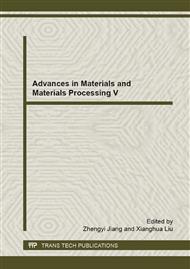p.751
p.756
p.762
p.766
p.770
p.773
p.777
p.781
p.786
Metal Turning Mechanical Model of Machined Surface Roughness
Abstract:
Consider the mechanism of the formation of surface roughness, this paper establish the mechanical model of undeformed chip thickness caused by the cutting edge,and the mechanical model of cutting residues caused by the tool feed movement . By means of Brammertz equation, combining the above two mechanical model,a more perfect surface roughness mechanical mode is established.
Info:
Periodical:
Pages:
770-772
Citation:
Online since:
March 2015
Authors:
Price:
Сopyright:
© 2015 Trans Tech Publications Ltd. All Rights Reserved
Share:
Citation:


